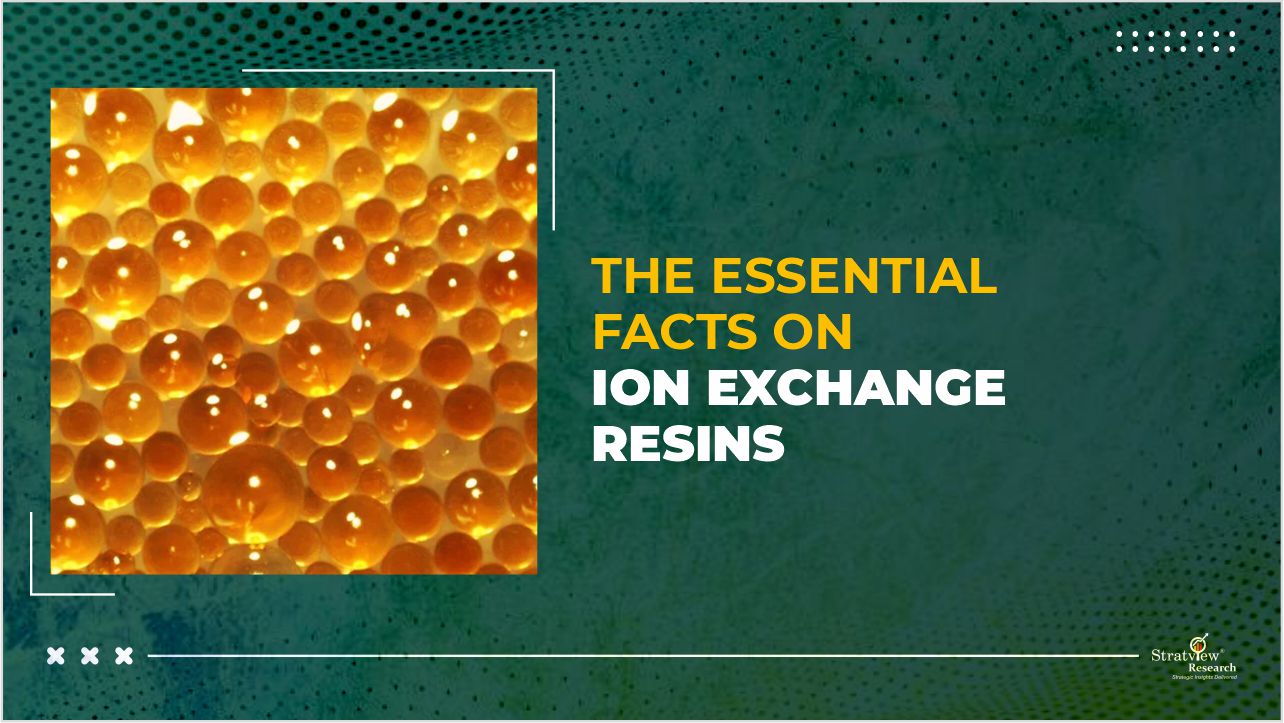
With the global population projected to rise from 8 billion in 2024 to nearly 9 billion by 2050, demand for clean water, hygienic food, power, and other essential industries will see rising demand, fueling strong growth in ion exchange resins. Stratview Research reports that the IX resins market is projected to expand at a 4.2% CAGR over the next five years, reaching USD 2.7 billion by 2030.
In a world where consumers prioritize purity and quality, industries are continually seeking advanced solutions to enhance their products. Whether in food and beverages, pharmaceuticals, chemicals, or water treatment, the need for effective purification processes is paramount. Among various methods, ion exchange (IX) has gained significant traction across diverse applications.
The effectiveness of ion exchange heavily relies on the use of ion exchange resins (IX resins)– specialized polymeric materials – that are designed to facilitate the exchange of specific ions in different solutions. These resins play a crucial role in removing impurities, thereby ensuring product quality and maintaining high industry standards. Additionally, ion exchange resins can be regenerated, allowing for repeated use and enhancing cost-effectiveness in treatment systems.
Water and Wastewater: The Leading End-User of Ion Exchange Resins
Ion exchange resins (IX resins) are extensively used in multiple sectors including water treatment, food & beverages, power, electronics, chemical & pharmaceuticals, and more. In 2024, the global demand for IX resins topped USD 2.1 billion according to a study by Stratview Research. With over 30% of the global demand, the water and wastewater treatment sector was the largest end-user of IX resins.
_80715.jpg)
Fig. 1: Ion Exchange Resins Market Share Across Applications
These resins selectively remove unwanted ions from water, targeting contaminants such as heavy metals and hardness ions like calcium and magnesium. They also enhance water quality by softening it and eliminating unpleasant tastes, odors, and colors, making the water safe and suitable for both human consumption and industrial processes.
According to the United Nations Educational, Scientific and Cultural Organization (UNESCO), over two billion people still lack access to safe drinking water. Additionally, the ever-increasing demand for water is driving the need for more extensive water treatment solutions. From 1900 to 2024, global annual water consumption rose by ~3,500 billion m3 globally and sources predict that global water usage is likely to increase by 20%-50% above current levels by 2050.
Making Food & Beverages Contamination Free
After the water & wastewater industry, a significant demand for IX resins also comes from the food and beverages industry, which ranks as the 2nd largest consumer of these materials accounting for over 23% of the total IX resins demand.
The F&B industry needs IX resins for a wide range of processes. The most notable ones are listed below.
- Ensure the supply of high-quality water for production processes,
- Remove color impurities (like melanoidins) from raw sugar solutions,
- Desalt and demineralize or remove excess salts and minerals for a purer product,
- Adjust acidity levels in fruit juices and other beverages,
- Stabilize colors by removing phenolic compounds that cause discoloration in beverages,
- Maintain flavor, clarity, and stability of alcoholic beverages,
- Remove salts from whey protein, baby food, and other nutritional supplements,
- Selectively isolate specific proteins from raw materials like soy, peas, or whey,
- Remove heavy metals, pesticides, and other contaminants from raw materials, and much more.
The F&B industry is witnessing substantial growth driven by changing consumer habits and preferences, growing awareness in health and hygiene, growing retail industry, and increasing demand for packaged food which is driving the demand for ion exchange (IX) resins. This industry generated a demand worth approximately USD 500 million in 2024, for IX resins.
It is also important to note that the demand for IX resins in the F&B industry predominantly came from the Asia-Pacific (APAC) region, which accounted for over 45% of the total demand in 2024. In contrast, North America and Europe combined catered to ~45% of the demand value.
The APAC region is home to the most populous countries like India and China, and the rapid growth of the F&B industry can also be attributed to this along with certain other factors including a rising middle class with increased disposable income, evolving consumers’ preferences for healthier options, dependency on convenient food options, rising e-commerce platforms and most importantly, consumers prioritizing premium experience that caters to different cultural nuances.
These elements collectively position APAC’s F&B industry for healthy growth in the coming years as well. However, APAC's dominance extends beyond the F&B industry to all end-use sectors of IX resins, as highlighted in the global ion exchange resins market report by Stratview Research.
Exploring Other Major End-Users of IX Resins
Apart from the above-mentioned industries, the other prominent users of IX resins are the power, electronics, and chemical industries.
Their primary functions include the removal of dissolved ionic impurities, preventing scaling and corrosion in boilers and reactors, eliminating dissolved salts, mitigating fouling in cooling systems, improving the efficiency of semiconductor manufacturing, supplying pure water for photolithography and etching, and much more. Together, these three sectors account for nearly 45% of the global demand for ion exchange resins in 2024.
Filtering the Future
Ion exchange resins are based on crosslinked polystyrene, which on reacting with sulfonate groups form cation exchangers or with amine groups create anion exchangers.
Polystyrene – a synthetic aromatic hydrocarbon polymer is derived from the monomer styrene – that is an industrial chemical derived from petroleum or natural gas extraction processes. The global fluctuations in oil prices driven by the vulnerable geo-political environment have a direct bearing on the availability and pricing of this by-product. Reliance on monomer styrene and polystyrene as key raw materials further contributes to the price pressure on IX resins. There have been instances of price rises as high as 15% by some of the leading players including LANXESS, DuPont, & Mitsubishi Chemical Corporation over the past few years.
Despite such challenges, the demand for ion exchange resins never ceased, since product purification is a mandatory step in their application industries. The expected rise in the global population from 8 billion in 2024 to ~9 billion by 2050 will create an incessant demand for water & wastewater treatment, hygienic food, power, and other end user industries, which will further create opportunities in the IX resins market. During the next five years, the market for ion exchange resins is likely to experience a growth of 4.2% (CAGR) clocking an annual sales value of USD 2.7 billion in 2030.
